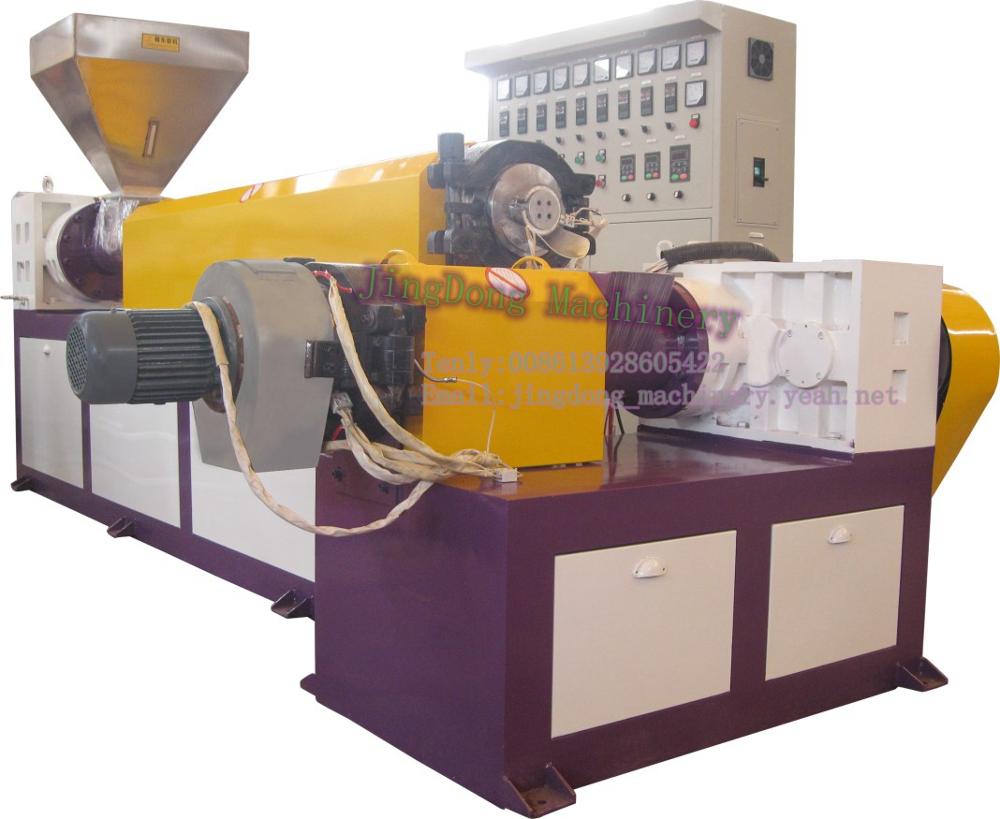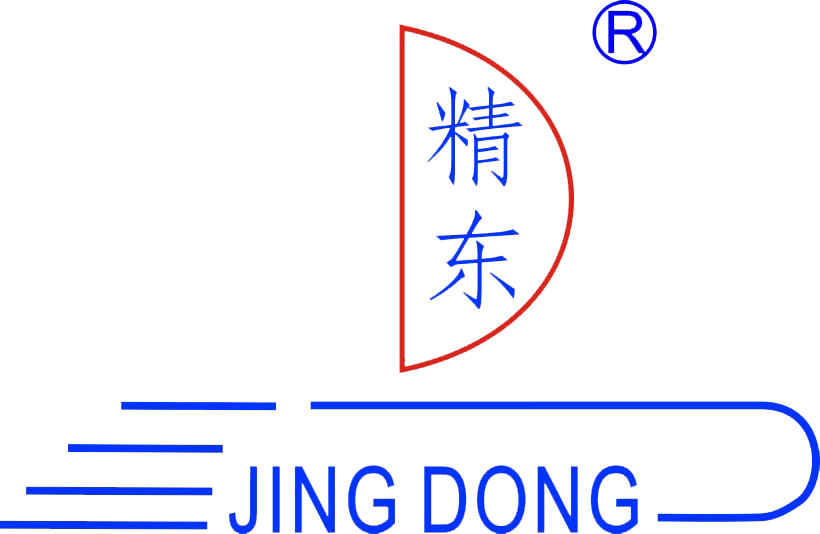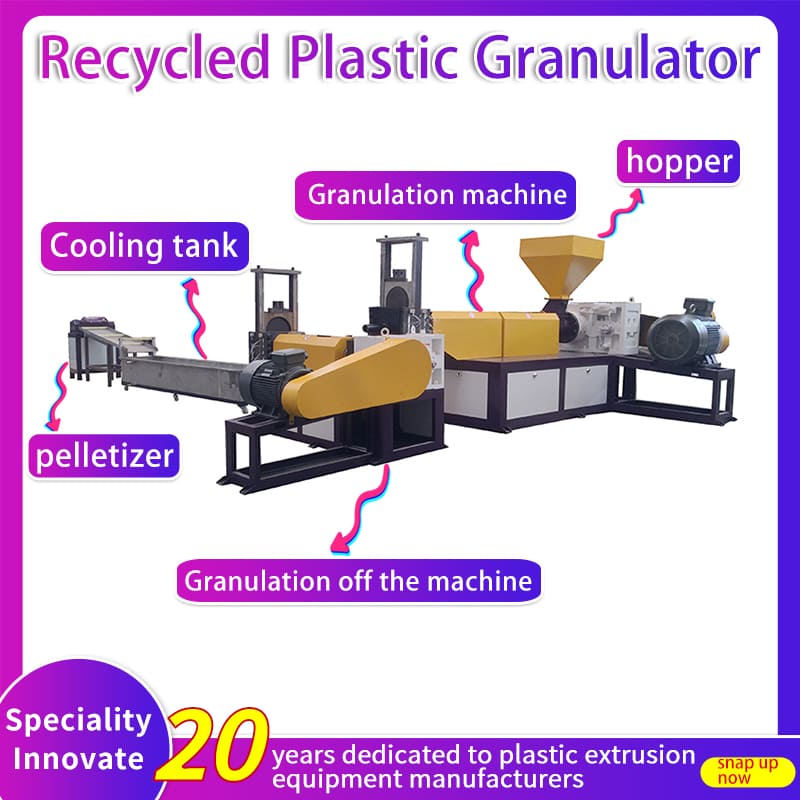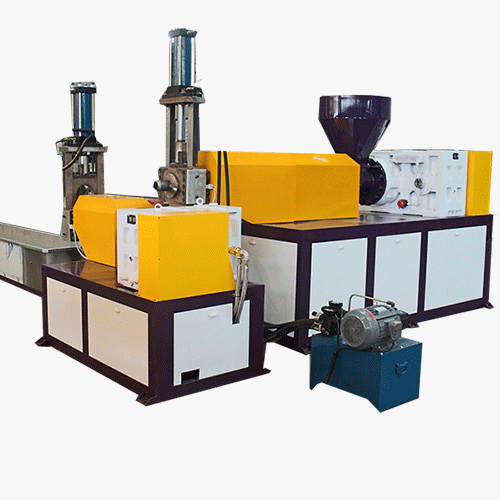
Choosing the Best Plastic Pelletizing Machine for Recycling Operations
Nowadays, plastic waste has become a growing environmental concern. As industries and communities look for sustainable solutions to reduce plastic pollution, plastic recycling has emerged as a key process. One of the most important tools in plastic recycling is the plastic pelletizing machine for recycling. These machines help transform plastic waste into valuable pellets that can be used to manufacture new products, contributing to a circular economy.
However, with various plastic pelletizing machines available in the market, selecting the right one for your operation can be a daunting task. This article will guide you through the process of choosing the best plastic pelletizing machine for recycling operations, covering key factors to consider, features to look for, and the benefits of using these machines in your recycling efforts.
The Role of a Plastic Pelletizing Machine in Recycling
A plastic pelletizing machine plays a pivotal role in the recycling of plastic materials. It is designed to melt plastic waste and convert it into uniform plastic pellets or granules. These pellets are easier to handle, transport, and store compared to raw plastic waste, and they can be used to create new plastic products. Whether you're recycling post-consumer plastic packaging, industrial plastic scrap, or plastic waste from manufacturing processes, a plastic pelletizing machine ensures that the material is processed efficiently and effectively.
Key Factors to Consider When Choosing a Plastic Pelletizing Machine for Recycling
1. Material Compatibility
One of the first factors to consider is the type of plastic materials you'll be recycling. Not all plastic pelletizing machines are suitable for every type of plastic. Some machines are designed to handle specific types of plastic, such as PET, PP, PE, or PVC. Make sure that the plastic pelletizing machine you choose is compatible with the type of plastic waste generated by your recycling operation.
For example, if your business primarily deals with polyethylene or polypropylene, a machine that specializes in these materials will provide better efficiency and product quality. A high-quality plastic pelletizing machine for recycling will be able to process a wide range of plastic waste, offering flexibility and scalability as your recycling needs evolve.
2. Throughput Capacity
Throughput capacity is an essential factor when selecting a plastic pelletizing machine. It refers to the amount of material the machine can process within a given time frame, usually measured in kilograms per hour (kg/h). Depending on the scale of your recycling operation, you will need a machine that can meet your processing volume demands.
If you operate on a large scale, choosing a machine with a high throughput capacity ensures that you can meet production targets and maintain a smooth workflow. Conversely, for smaller operations, a machine with a lower throughput may be more appropriate.
Plastic Recycling Pelletizing Machine Line
3. Energy Efficiency
Energy consumption is a significant cost factor in recycling operations. An energy-efficient plastic pelletizing machine for recycling will reduce operational costs over time, making your recycling efforts more cost-effective. Look for machines that incorporate energy-saving features, such as optimized heating systems and efficient motors, to minimize energy use while maximizing throughput.
Additionally, some modern pelletizing machines use advanced technology to ensure consistent energy performance, reducing the risk of energy wastage and unnecessary operational downtime.
4. Ease of Maintenance
Like any heavy-duty equipment, plastic pelletizing machines require regular maintenance to ensure longevity and optimal performance. When choosing a plastic pelletizing machine, consider models that are easy to maintain and service. Look for machines that are equipped with self-cleaning features or come with accessible components that make routine maintenance easier.
Additionally, choose a machine that is built with durable, high-quality components. Machines made from stainless steel or other corrosion-resistant materials will be more reliable in the long run, especially when processing challenging plastic types.
5. Automation and Control Systems
Modern plastic pelletizing machines come equipped with sophisticated automation and control systems that improve the overall efficiency of the recycling process. These systems allow you to monitor and adjust parameters such as temperature, pressure, and throughput in real time, ensuring that the machine operates at peak performance levels.
Some machines also include automatic feeding systems, which reduce manual labor and increase processing efficiency. Choosing a plastic pelletizing machine for recycling with an advanced control system allows for greater precision and improved product quality.
6. Output Quality
The quality of the pellets produced by the machine is another critical factor. High-quality pellets are uniform in size and shape, which makes them easier to reuse in the manufacturing process. Machines that provide precise control over the pelletizing process tend to produce better-quality pellets.
Look for a pelletizing machine that is capable of producing consistent, high-quality pellets. Machines with a good cutting system and optimized cooling process will ensure the pellets maintain their shape and integrity.
recycle pelletizing machine manufacturer
Benefits of Using a Plastic Pelletizing Machine for Recycling
1. Environmental Impact Reduction
By recycling plastic waste into usable pellets, a plastic pelletizing machine reduces the amount of plastic waste that ends up in landfills or oceans. This contributes to reducing the environmental footprint of plastic and promotes the sustainable use of resources.
2. Cost-Effectiveness
Recycling plastic with a pelletizing machine allows businesses to reuse material, reducing the need to purchase new raw materials. This can lead to significant savings, especially for industries that require large volumes of plastic for production. Moreover, high-efficiency machines reduce energy costs, further improving the overall cost-effectiveness of your operation.
3. Boosting Productivity
A well-chosen plastic pelletizing machine will improve the productivity of your recycling operation by increasing throughput and reducing downtime. Automation features allow for continuous, smooth operation, while easy maintenance minimizes disruption to your workflow.
4. High-Quality End Products
The uniform pellets produced by a plastic pelletizing machine can be used to produce a wide range of high-quality plastic products. This increases the potential for profitability by enabling the production of items such as plastic containers, pipes, and even automotive parts from recycled plastic.
Conclusion
Selecting the right plastic pelletizing machine for recycling is crucial for the success of your plastic recycling operation. By considering factors such as material compatibility, throughput capacity, energy efficiency, ease of maintenance, and automation features, you can ensure that your investment leads to efficient and cost-effective recycling processes. The right machine not only boosts your operational efficiency but also contributes to sustainability by turning plastic waste into valuable resources.
To learn more about the best plastic pelletizing machines for recycling, visit Jingdong and explore our range of solutions designed to help businesses like yours optimize their recycling operations and contribute to a greener future.







